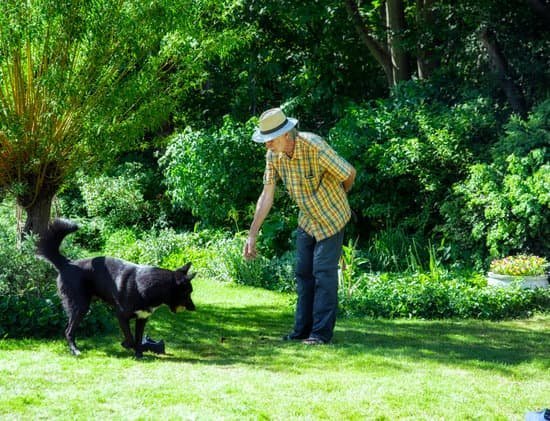Drug dogs, also known as detection dogs, play a crucial role in law enforcement by using their keen sense of smell to detect illegal substances such as drugs. These highly trained canines are an invaluable asset to police departments and government agencies in the ongoing battle against drug trafficking and substance abuse. But amidst their reputation for sniffing out illicit substances, a question that often arises is: are drug dogs trained to attack?
The use of drug dogs dates back decades and has proven to be a highly effective method in detecting narcotics in various settings such as airports, schools, and border crossings. These specially trained dogs undergo rigorous training to hone their olfactory senses and respond to specific commands from their handlers. Their primary function is to locate drugs hidden in luggage, vehicles, or even on individuals with remarkable accuracy.
Despite their vital role in law enforcement, concerns have been raised about the potential aggressive behavior of drug dogs towards individuals they indicate have drugs on them. While drug dogs are not specifically trained to attack or show aggression towards suspects, there have been instances where these animals have exhibited aggressive behavior towards individuals during searches. The training methods and handling of drug dogs play a crucial role in ensuring they perform their duties effectively and safely without causing harm.
The Role of Drug Dogs in Law Enforcement
Drug dogs play a crucial role in law enforcement agencies around the world. These specially trained canines are used to detect illegal substances, including drugs and explosives, in various settings such as airports, borders, and even in schools. The use of drug dogs has proven to be an effective tool in combating drug trafficking and ensuring public safety.
Benefits of Using Drug Dogs
One of the main benefits of using drug dogs in law enforcement is their ability to detect substances that may otherwise go unnoticed by humans. These highly trained animals have a keen sense of smell, which allows them to sniff out even the smallest amounts of drugs. Additionally, drug dogs can cover large areas quickly, making them valuable assets in situations where time is of the essence.
Another advantage of using drug dogs is their non-invasive nature. Unlike other methods of drug detection, such as physical searches or invasive screenings, drug dogs can signal the presence of drugs without causing any harm to individuals or property. This makes them a preferred method for law enforcement agencies when screening large groups or conducting searches in public spaces.
Collaboration With Law Enforcement Officers
Drug dogs often work alongside law enforcement officers during operations. These canines rely on their handlers to provide guidance and support during searches or patrols. In most cases, drug dogs are not trained to attack individuals but rather to focus on detecting substances. Their primary role is to alert their handlers to the presence of drugs through specific behaviors or signals, allowing officers to then take appropriate action following legal protocols and procedures.
Overall, drug dogs serve as valuable partners in law enforcement efforts by providing an efficient and reliable means of detecting illegal substances. Their specialized training and unique abilities make them indispensable tools for maintaining public safety and upholding the law.
Training Process for Drug Dogs
Drug dogs play a crucial role in law enforcement by assisting in the detection of illegal substances such as drugs. The training process for drug dogs is intensive and requires dedication from both the handlers and the dogs themselves. Drug dogs are not trained to attack individuals but rather to locate the scent of drugs through rigorous training exercises.
The training process for drug dogs involves various stages, including imprinting them with the scents of different drugs, teaching them basic commands, and gradually increasing the difficulty of locating hidden narcotics. Handlers use positive reinforcement techniques such as treats and toys to encourage drug dogs to successfully detect drugs. The key to successful training is consistent practice and reinforcing desired behaviors.
During training, drug dogs are taught to signal when they detect the scent of drugs by sitting or pawing at the source of the odor. This alert behavior signals to their handlers that drugs are present in a particular area.
Drug dogs are not trained to attack individuals, as their main focus is on detecting illegal substances rather than apprehending suspects. It is important for handlers to reinforce appropriate behavior so that drug dogs can effectively perform their duties without causing harm to anyone.
What Commands Are Drug Dogs Trained to Follow
Drug dogs play a crucial role in law enforcement agencies around the world, using their keen sense of smell to detect illegal substances such as drugs and explosives. These highly trained canines are an essential tool in combating drug trafficking and maintaining public safety. But what commands are drug dogs trained to follow?
Basic Commands
Drug dogs undergo intensive training programs that teach them a variety of commands to assist law enforcement officers in their duties. These commands include basic obedience skills such as sit, stay, come, and heel. These foundational commands help handlers control the dog’s behavior in various situations and establish a strong working relationship between the canine and their handler.
Scent Detection Commands
One of the most important commands that drug dogs are trained to follow is the scent detection command. This involves teaching the dog to alert their handler when they detect the presence of drugs or explosives. This could be through behaviors such as sitting down or pawing at the source of the scent. By following this command, drug dogs help law enforcement officers pinpoint illicit substances quickly and effectively.
Search Commands
Drug dogs are also trained to follow search commands, which involve systematically searching an area for hidden drugs. Handlers will give cues to the dog to indicate where they should search, whether it be a specific location or object. Through consistent training and practice, drug dogs become proficient in carrying out search commands with precision and accuracy.
How Drug Dogs Detect Drugs
Drug dogs, also known as sniffer dogs, play a crucial role in law enforcement by using their keen sense of smell to detect drugs and other contraband. These highly trained canines are invaluable assets in locating illegal substances in a variety of settings, including airports, schools, and borders. But how exactly do drug dogs detect drugs?
The remarkable ability of drug dogs to detect drugs is primarily due to their powerful sense of smell, which is estimated to be 10,000 to 100,000 times more sensitive than that of humans. When it comes to identifying drugs, these specialized canines are trained to distinguish specific scents associated with various types of narcotics. This training process involves familiarizing the dogs with the odor of different drugs through positive reinforcement techniques.
How Drug Dogs Detect Drugs:
- Drug dogs are trained to locate the source of specific scents emitted by drugs such as marijuana, cocaine, heroin, and methamphetamine.
- Handlers use reward-based methods to teach drug dogs to alert when they detect the target odor.
- Once the dog detects the scent of drugs, they will exhibit a certain behavior or signal – such as sitting down or pawing at the source – indicating to their handler that they have detected illicit substances.
Are Drug Dogs Trained to Attack
Drug dogs play a crucial role in law enforcement as they are trained to detect various substances, including drugs, explosives, and even missing persons. These highly skilled canines undergo rigorous training to ensure their effectiveness in assisting law enforcement agencies. While drug dogs are not specifically trained to attack individuals, they are trained to alert their handlers to the presence of illegal substances through behaviors such as sitting or scratching at a specific location.
The training process for drug dogs involves teaching them how to associate the scent of drugs with a reward, usually a toy or treat. This positive reinforcement encourages the dogs to actively search for drugs and indicate their findings to their handler. Additionally, drug dogs are trained to follow certain commands that help guide them during searches and ensure accurate detection of illegal substances.
During their training, drug dogs learn commands such as “search” to begin looking for drugs, “sit” when they detect the scent of drugs, and “stay” until their handler gives them further instructions. These commands enable drug dogs to effectively communicate with their handlers and assist in locating hidden contraband. Moreover, drug dogs may receive specialized training based on specific tasks they are expected to perform, such as detecting narcotics at airports or searching vehicles for drugs.
In order to maintain public safety and prevent potential harm, it is essential that drug dogs are not trained to attack individuals. While these canines have heightened senses and strong instincts, their primary function is to detect illegal substances rather than engage in physical aggression towards people. However, instances of drug dogs mistakenly acting aggressively towards individuals have been documented, leading to discussions about the potential risks associated with their use in law enforcement operations.
Instances of Drug Dogs Attacking
Drug dogs are not typically trained to attack individuals, but rather to detect the presence of drugs through their keen sense of smell. However, there have been instances where drug dogs have exhibited aggression towards people. These cases are often rare and can be attributed to various factors such as training deficiencies, handler error, or misinterpretation of a situation by the dog.
One key factor in preventing instances of drug dogs attacking is providing them with thorough and proper training. Trainers focus on teaching the dogs to signal the presence of drugs without using force or aggression towards individuals. Additionally, handlers play a critical role in ensuring that drug dogs remain calm and focused during their work to minimize the risk of any unwanted behaviors.
It is important to note that when drug dogs do display aggressive behavior, it is often a result of external variables rather than their specific training. Handlers must always be vigilant in monitoring their dog’s behavior and addressing any signs of aggression promptly through appropriate corrective measures. By maintaining a safe working environment and following best practices in handling drug dogs, the likelihood of instances where drug dogs attack can be significantly reduced.
| Prevention Measures | Importance |
|---|---|
| Thorough Training | To signal without using force |
| Handler Vigilance | To monitor behavior for signs of aggression |
| Safe Working Environment | To reduce likelihood of attacks |
Controversies Surrounding the Use of Drug Dogs
While drug dogs can be valuable assets in law enforcement, there has been significant controversy surrounding their use, particularly regarding whether or not drug dogs are trained to attack. It is important to note that drug dogs are typically trained to detect the presence of drugs through their powerful sense of smell rather than to attack individuals. However, there have been instances where drug dogs have been involved in attacks, raising concerns about their training and behavior.
One of the key issues contributing to controversies surrounding drug dogs is the lack of transparency and accountability in their training and deployment. Critics argue that the training process for drug dogs may not always be standardized or closely monitored, leading to inconsistencies in how they respond to stimuli. This lack of oversight can result in situations where innocent individuals are mistakenly targeted or harmed by a drug dog.
Furthermore, some argue that the use of drug dogs can lead to violations of individuals’ civil rights, particularly in cases where searches based on a dog’s alert lead to unwarranted intrusions into personal property or privacy. Concerns have also been raised about the reliability of drug dogs’ alerts, as studies have shown that false positives can occur due to factors such as handler bias or environmental contamination.
These controversies highlight the need for more stringent standards and regulations governing the use of drug dogs in law enforcement operations.
Conclusion
Drug dogs play a crucial role in law enforcement by assisting officers in detecting illegal substances such as drugs. However, it is important to note that drug dogs are not trained to attack individuals. These highly trained animals are taught to use their keen sense of smell to locate narcotics, not to act aggressively towards people. Their training focuses on sniffing out specific scents and alerting their handlers without showing signs of aggression.
The proper training of drug dogs is essential in ensuring accurate and reliable results. By following specific commands during their training process, drug dogs can effectively detect hidden drugs in various environments. These commands include signals for when they have found the scent of drugs and how to indicate this discovery to their handlers. Through consistent training and reinforcement, drug dogs can perform their duties efficiently without resorting to aggressive behavior.
In conclusion, drug dogs serve as valuable assets in the fight against illegal drugs. While there have been instances of drug dogs attacking individuals in rare cases, these incidents are typically due to improper handling or lack of adequate training. It is crucial for law enforcement agencies to prioritize the proper training and care of drug dogs to prevent any potential risks and ensure that they continue to fulfill their important roles effectively and safely.
Frequently Asked Questions
Are Police Dogs Trained to Be Aggressive?
Police dogs are not trained to be aggressive towards humans unless provoked or given a command by their handler. They are typically trained to be obedient, protective, and to follow commands to apprehend suspects or detect illegal substances.
What Are Drug Dogs Trained For?
Drug dogs are specifically trained to detect the presence of drugs such as marijuana, cocaine, heroin, methamphetamine, and other illegal substances. They have a highly developed sense of smell which enables them to sniff out even small amounts of drugs hidden in various places.
Do Drug Dogs Attack?
Drug dogs are not trained to attack or physically harm individuals. Their primary role is to sniff out drugs and alert their handlers by indicating on the scent of drugs.
However, if the situation escalates and there is a threat posed by an individual, a drug dog may act defensively under the guidance of their handler but attacking is not part of their training or purpose.

Welcome to the blog! I am a professional dog trainer and have been working with dogs for many years. In this blog, I will be discussing various topics related to dog training, including tips, tricks, and advice. I hope you find this information helpful and informative. Thanks for reading!





